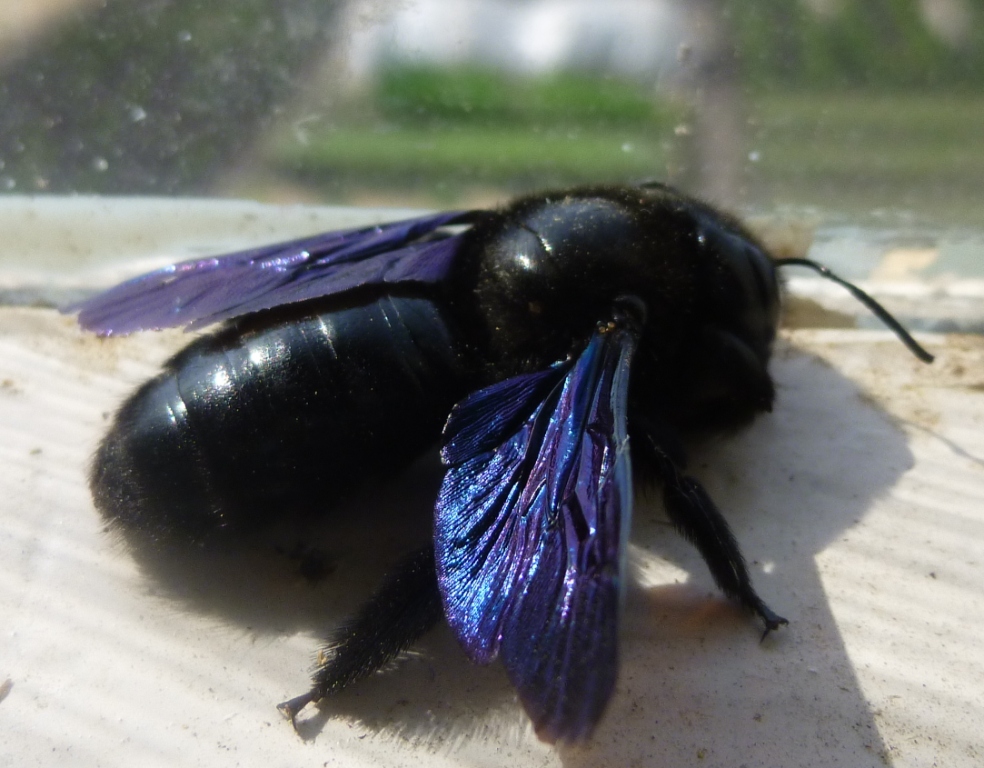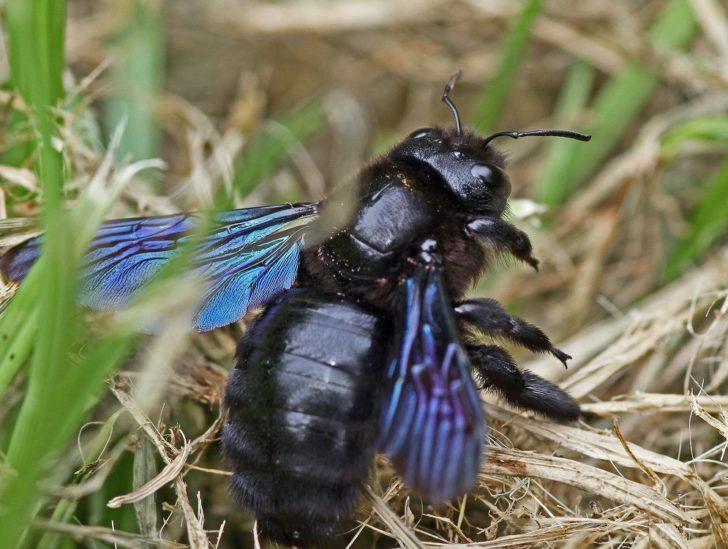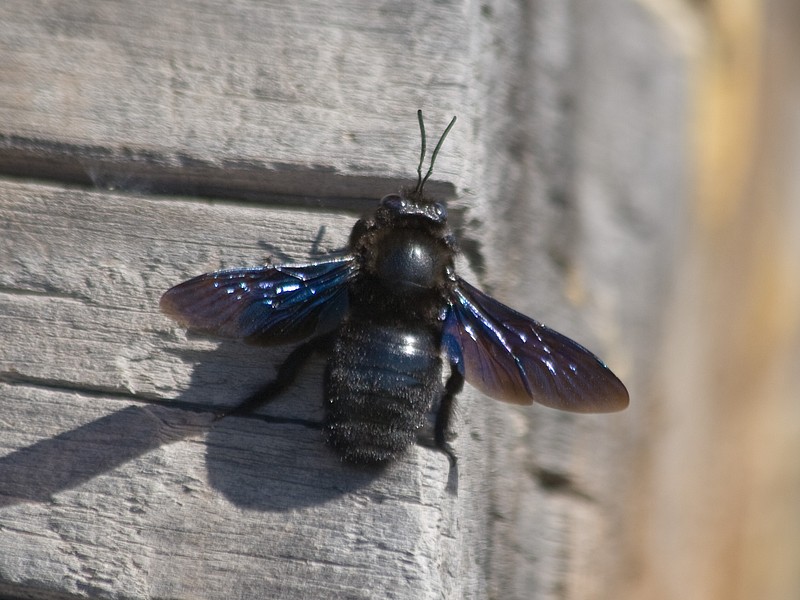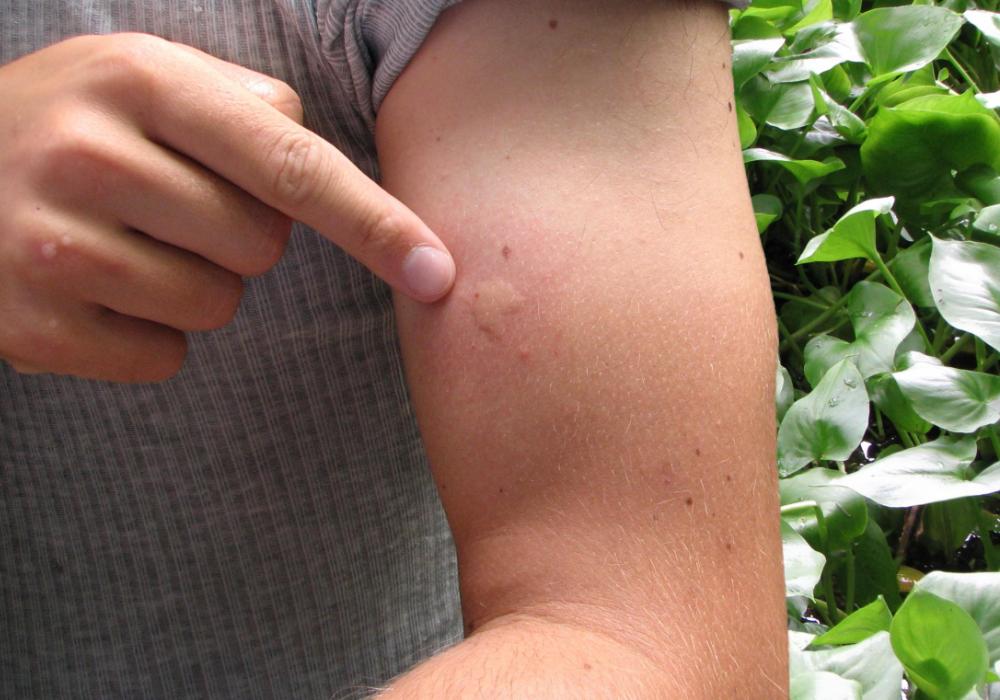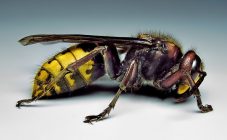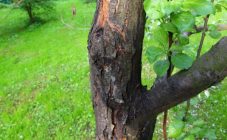Content:
A black insect similar to a bumblebee can be found infrequently - the species is listed in the Red Book, as decreasing in number. The black bumblebee, or carpenter bumblebee, is actually the largest bee.
Black bumblebee with blue wings
An insect is called a bumblebee because of its size and a loud buzzing sound when flying. A carpenter, or tree bumblebee, due to the peculiarities of building nests in trees.
What does it look like
There are black and white bumblebees, as well as with yellow, orange, red or gray lines. Only the carpenter is distinguished by an exceptionally black shiny color of the whole body with a blue tint on the abdomen. The size of the insect, reaching 3 cm in length, and its large, wide head with black eyes are also impressive. The hairs on the body are sparse, which makes the parts of the body look glossy-smooth.
The insect is sometimes considered a fly or a bumblebee, but the black bee belongs to the Xylocop genus, a species of common bees. There are several hundred species of this type of bee, insects are the oldest representatives of the fauna.
The wings of the bee are transparent, blue or purple, with a jagged edge and dark veins.
Some males have brown hairs on their bodies.
The nectar and pollen that the bee collects are needed only for its own nutrition and laying in cells for raising offspring, therefore, such bees do not produce honey that can be collected by humans. Even the structure of the legs does not provide for a large amount of nectar. On the limbs, the blue bumblebee does not have pollen baskets; nectar sticks to their long, dense villi.
Distinctive features
Unlike the strict hierarchy that exists in the family of common honey bees, the carpenter bee is a solitary insect that does not have a main queen and a swarm. Each female creates her own nest and brood. The life of the gray bumblebee is seasonal and is 6 months of the warm season. Sometimes individuals can live for two seasons, hibernating in a dormant state in a hole in a tree built in summer.
The bee can fly long distances in search of nectar, is hardy, it does not interfere with bad weather or precipitation. This feature, which differs from the habits of ordinary bees that do not fly out of the hive into the cold, endows the insect with valuable pollinator qualities.
To attract the bee, the male performs courtship rituals. The bumblebee climbs onto one of the high branches and begins to buzz violently to attract attention. In the event that the female does not react, the bumblebee can climb into her nest several times. This behavior is comparable to the courtship periods of some birds.
Bumblebee carpenter
The bumblebee carpenter is distinguished by the ability to build tunnels inside the wood, in which it breeds and hibernates.
Insects choose trees for their nests old, dry, loose, with peeled bark; rotten stumps also become suitable. A tree or other place where a nest is formed, if it is in a suitable condition, bees can use up to 14 years in a row, settling in them from year to year.By choosing ready-made, but old, holes for laying eggs left by other representatives, bees are able to repair them by holding the wood together with their saliva. The main condition for choosing a place for a nest is the dryness and softness of the material. Insects will never choose a fresh, healthy tree. If possible, several bees make holes in the same material next to each other.
In wood, with the help of powerful jaws, insects gnaw out a passage - an even circle, the size of a purple bee. The move is made from the south side of the tree and has a horizontal direction at first, and then goes down and into the tree at a distance of about 30 cm.This tunnel is needed to lay the larvae, which will be located in it one above the other and independently go through all stages of development until the adult is formed ...
In the gnawed passage in the wood, the female begins laying: at the very bottom, the bee adds mixed nectar with pollen to feed and develop the larva, the first egg is produced, then the cell is sealed, a partition is made of wood. A new egg is laid on the formed partition, so the process is repeated from 6 to 10 times, the gouged passage is completely filled. The last sealing of the entrance is done from above, so that the hole will not be visible. The female will guard the place of laying for some time, and then fly away. At the end of the summer season, the female that has laid eggs most often dies.
The entire clutch, and sometimes adult females, remain in the nest for the winter and fly out the next season at the beginning of summer. The formed individuals fly out almost simultaneously, gnawing through the partitions. Overwintered old females give another offspring in the new season, often in the same place. New females will have to find their own nesting site.
Why is a bumblebee bite dangerous?
The bumblebee, due to its biological characteristics, does not bite, but stings, injecting a poisonous composition under the human skin. Only the female of the species, which is not aggressive in nature, is capable of stinging. When colliding with a person, the ability to avoid a bite is high. It is not often possible to meet a female building a nest, but the bee will protect itself and the created tunnel with offspring if something threatens her.
A carpenter bumblebee bite is dangerous due to the content of poison in its sting and severe swelling of the bite site. If a puncture of the skin can only be fraught with painful sensations that subside after a while, then a sting in the eye, nose or throat is life-threatening. A neck bite can cause choking due to swelling or allergic reactions.
Xylocopes insects are especially active in spring.
Black bumblebees do not like noise, so you can drive them out by creating loud sounds near the nest.
The place where the bumblebee carpenter worked will give out a perfectly even hole in the wood, as if drilled with a construction tool, and a pile of shavings nearby.
Where do albino blue bumblebees live?
Due to the peculiarities of wintering of pupated larvae inside the wood, albino bumblebees can be found only in warm regions of Ukraine, Turkey, Asia or Mongolia. In Russia, habitats are found in the Caucasus, Stavropol and Krasnodar Territory, Crimea.
Purple carpenter bees love solitude in forests, but suffer from the inability to find old wood to raise offspring, mainly due to plowing fields and deforestation. Therefore, a carpenter settles next to a person, making moves in buildings made of wood. Due to its threatening appearance, the danger of a bite and damage to wooden buildings, it is an unwanted neighbor that many want to get rid of. But do not forget that the insect is a valuable pollinator and endangered species.
In order not to have to exterminate the insect listed in the Red Book, you need to know that the purple bumblebee will not encroach on painted and processed wood.
